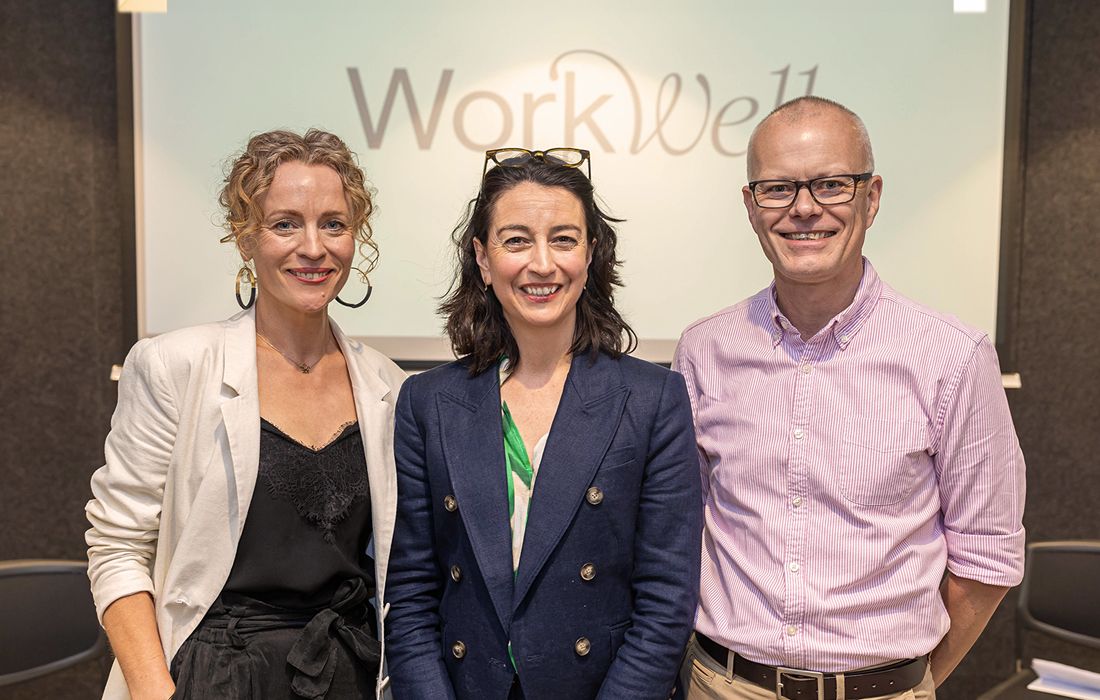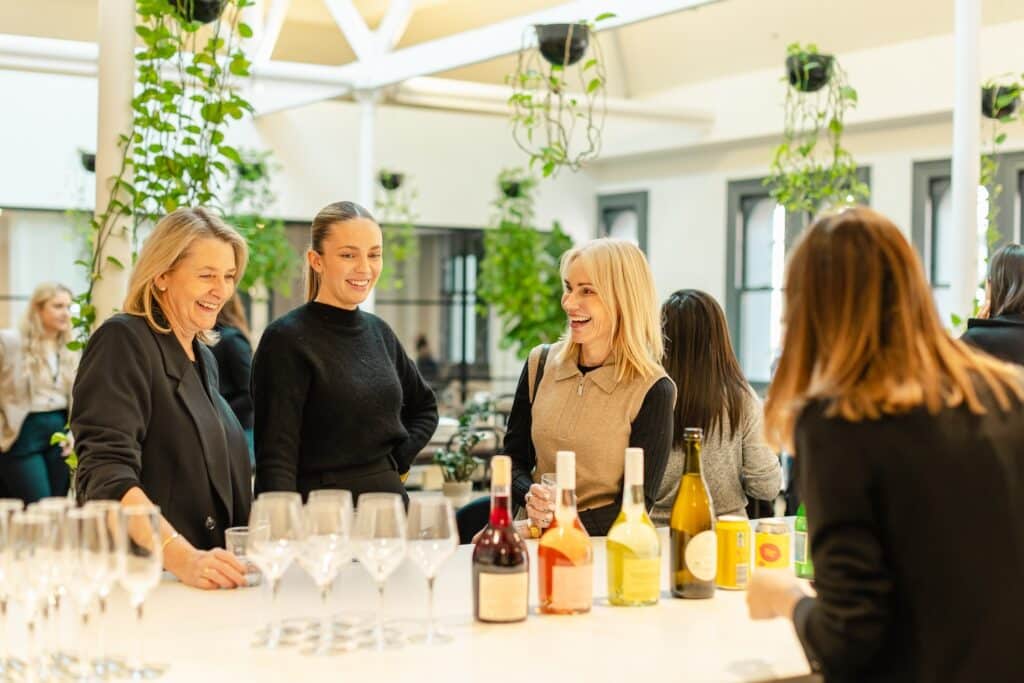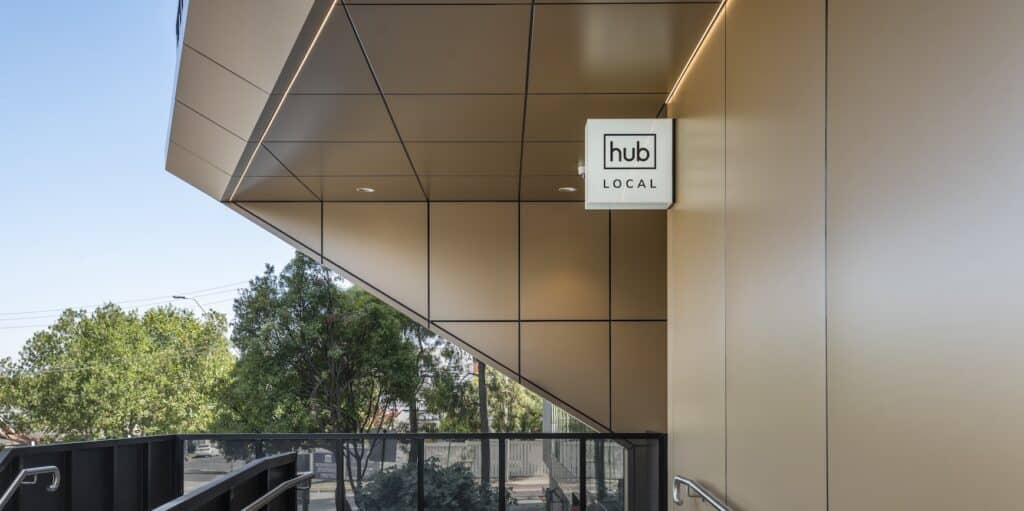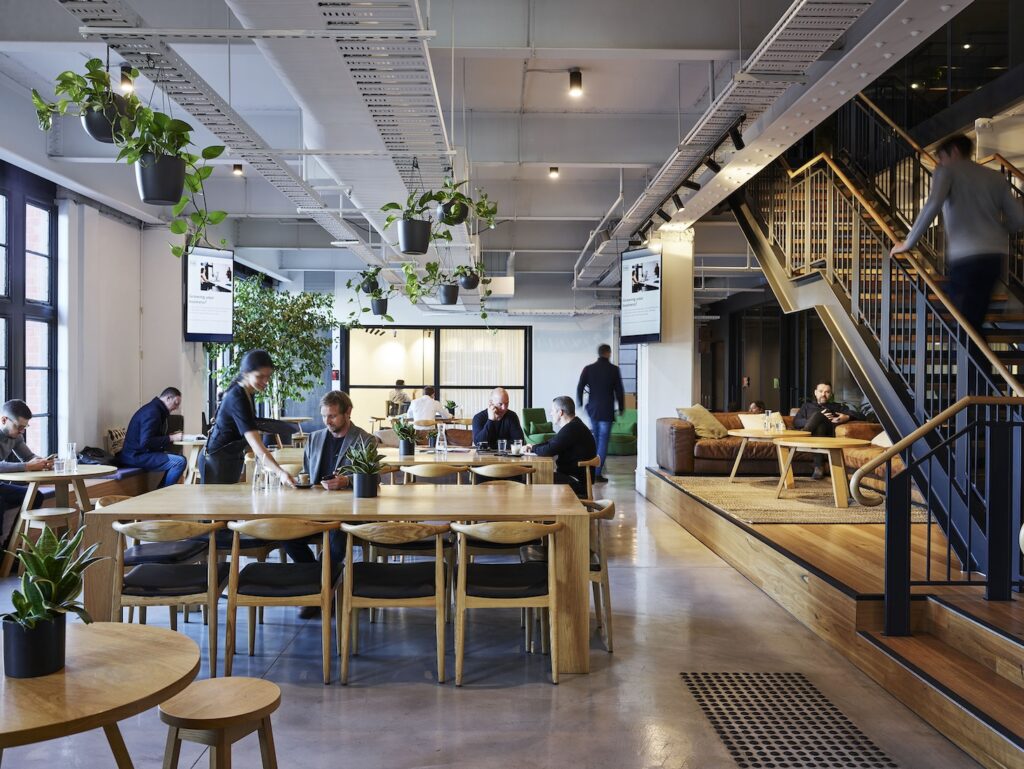Flexible work. Office mandates. Quiet quitting. So many buzzwords associated with the future of work at the moment – and not all are positive.
But while the post-pandemic work landscape may feel a little complex right now, it can pave the way to a whole new exciting – dare we say it – era of work. If we do it right.
So, will hybrid work stay or go? Why is everyone feeling so fatigued? And what’s the real problem that companies are facing in a post-pandemic world?
John Preece (CPO, Hub Australia), Catherine Robertson (Wellbeing Consultant) and Marisa Bosotti (Principal Consultant, Eek & Sense) share their thoughts with us.
‘Flexible work’ is not as new as you think
As the world emerged from the pandemic, it felt as though there was a big focus on hybrid work. Everyone expected some form of flexibility, and nobody seemed to care whether you worked from the office, home or your hotel room in Bali.
It felt official. COVID had left us a legacy in the form of ‘liberated work’.
But… was it really such a new phenomenon? According to John, not exactly.
“Underutilised office space is not a new phenomenon,” he says. “A time utilisation study by AECOM over the decade prior to the pandemic demonstrated that workspaces were occupied, on average, about 42% of the time.
“That means more than half the time, people were already working elsewhere – whether that’s at home, at a client’s office, at a third space, or travelling for business. And this was pre-pandemic.”
So flexible work really is the result of a gradual evolution of work habits and trends through the years. Although, of course, COVID had put its foot on the accelerator.
“It was happening anyway, but no one was talking about it and very few were actually measuring their office occupancy,” John adds. “But now, post-pandemic, it’s become a topic of conversation, one that’s constantly getting headlines in the press.
“And of course, the pandemic has made a lot more people readjust their priorities around work versus their families and personal life.”
In other words, the desire for flexibility is not new. But COVID has helped swing the pendulum a little bit more, and people are now more confident about asking for it.
So… Is hybrid work here to stay?
The general consensus is a resounding yes: hybrid is the way to go.
In the 2022 Liberated Work report – produced by Hub Australia in collaboration with WORKTECH Academy – almost 60% of employees surveyed said they expect to be working in a hybrid way over the next 10 years.
But what about the recent KPMG report that said two-thirds of CEOs surveyed expect their teams back in the office full time within the next three years?
“I find that expectation interesting, given that wasn’t even happening before the pandemic,” John says. “People in the office, five days a week, 9 to 5? That hasn’t been the case since the 1990s.”
Which was a time when computers were big machines fixed on the office desks, with telephones wired to the walls, and information stored within physical files locked in the office.
We live in a very different world today.
Plus, COVID has shown us how, generally speaking, the ‘central place’ is no longer necessary for employees to get their work done. ‘Work’ has finally, and convincingly, been unshackled from ‘place’.
Catherine, too, believes that workplace arrangements can’t be rigid anymore.
“Employees want flexibility,” she says. “They’ve adjusted their lives and seen the benefits of hybrid working. Even a mandate of three days a week back at the office is putting some people under strain and stress.”
Marisa shares that view. “Without a doubt, people want to work flexibly. All of the research is showing that people want flexibility in their work.”
But what is flexibility – and how can we make hybrid work for all parties?
“It’s really based on individual circumstances and how they’ve set up their life,” Marisa points out. “So it’s very difficult for companies to dictate a set schedule. A blanket rule is not going to satisfy people across the board.”
John puts it this way: “Hybrid is not just the notion of two or three days in the office, a couple of days at home. It’s a fundamentally different way of working. And managers need to be armed with the right training to manage their teams in that different way.”
Because without having the right skills, structure and support in place, managers and employees can spiral from a mental health perspective. Which leads us to the next important conversation.
The real problem leaders are facing
The key message that resonates with people at the moment is a recognition that they’re struggling a bit more. Burnout seems to be omnipresent. Exhaustion, a key theme.
Catherine elaborates: “According to Deloitte’s research, one in three workers are struggling with fatigue or poor mental health. And not just employees, but those at the senior leadership and executive level as well.
“In fact,” she adds, “the research also showed that 75% of executives were considering quitting their job for one that supports their wellbeing better.”
Marisa agrees, saying the GLWS data presents two current major trends. “First, only 1 in 10 leaders and executives at the moment say that they’re thriving. And on the other side, 4 in 10 at the moment say that they’re struggling or languishing or unwell.”
What’s even more worrisome? The number of people reporting that they’re thriving is decreasing. While the number of people reporting that they’re struggling is increasing.
This is fueled by a combination of factors: the cumulative effects of the COVID years. The uncertainty in the world at large. The juggle between work and family. And the blurring lines between the office and home life.
So the real challenge that leaders are facing in today’s world – and in the foreseeable future – is a dip in workplace wellbeing. And the inability to respond effectively to burnout, wellbeing and mental health will be the next generation of leaders’ new existential challenge.
But the solution is not as simple as allowing employees to work from home. Because while flexible work can go a long way to support workers’ wellbeing, it can also do more harm than good when not implemented effectively.
Marisa uses high performers as an example. “People who are really high-driven, high-performing, and highly motivated are more prone to work addiction. And these people working from home? A really bad formula. Because now they have 24/7 access to work if they want. They’ve got no guardrails anymore. No boundaries. And over time, it wears people down.
“And so, we’re finding this sustained erosion of boundaries creating a significant and severe impact on wellbeing.”
The truest form of inclusion and diversity
So while the noise seems to centre around ‘to hybrid or not to hybrid’, perhaps the crux of the matter should really be ‘how do we improve workplace wellbeing?’.
“It’s complex. There’s no one-size-fits-all answer to this,” Marisa admits. “Wellbeing is, particularly for leaders and those managing a team, a complex interplay of internal and external factors.
“Someone’s formula to wellbeing is going to be very different based on what’s going on in their lives and work and all the rest of it.
“Employers need to have an awareness and an understanding of measuring and collecting the right data to actually benchmark how our people are faring. There needs to be a genuine assessment of wellbeing, to understand what’s going on in the culture of the organisation, in the job, and in the individual.”
Without asking the right questions and having a valid assessment and diagnosis, we cannot treat the root cause of the problem.
But when done right, Marisa says it becomes the truest form of diversity and inclusion we can get.
“It’s really seeing each individual for who they are and what their needs are, and valuing each individual.”
Leading with authenticity – and empathy
Hybrid work has also opened up a whole new interesting set of questions around what the employer is accountable for.
In Australia, the OHS Act now includes psychological health – providing employers with a clearer, official guidance on protecting employees from mental or psychosocial risks.
But how should employers set boundaries and manage their team, when most of them are not working from the office?
The best way forward, Catherine believes, is for leaders to foster open communication – and practise role modelling.
“Wellbeing means different things to different people,” she says. “And it covers a lot of ground – from physical and mental to spiritual and financial. So it’s important that we encourage and foster authentic communication and empathy in the workplace.
“Otherwise, no one would seek help when struggling or feeling overwhelmed. And that may then manifest as quiet quitting.”
Catherine also calls for leaders to step up and role model their own prioritisation of wellbeing.
“Leaders need to begin to explore and understand their own wellbeing to then be able to have empathy and understanding of what their teams are experiencing.
“When leaders openly talk about their challenges, their struggles, their weak spots and what they’re doing to remedy it, they’re normalising issues and difficulties with wellbeing.
“That gives permission for that conversation to flow down to the rest of the organisation. And create a culture of openness and understanding, compassion and empathy – one that prioritises wellbeing.”
Complex, but exciting, time ahead
Without a doubt, we still have many questions unanswered when it comes to navigating the future of work. But one thing’s clear: we’re entering new grounds in a positive way.
“It’s complex. But to me, it’s exciting,” Catherine enthuses. “The discussions we’re having today wouldn’t have been taking place 10 years ago. Maybe not even five years ago. So this shows that wellbeing levels and psychological safety in the workplace is becoming more of an area of concern and a topic of interest.”
Marisa agrees, adding that employers are generally on board this new direction.
“A decade ago, ‘wellbeing’ wasn’t even a term used in organisations. And now, on the whole, there’s a genuine desire to want to work this out. There’s a recognition that wellbeing and employee wellbeing is something employers need to care about, that you can’t separate work and life anymore.
“So it’s exciting and it’s positive. There’s a much greater awareness, much greater education and understanding that this is important,” she says.
“In terms of having organisations willing to consider wellbeing with the same level of importance as they would data security – to actually put their money where their mouth is – that’s still got some work to do.
“But it’s getting there.”
At Hub Australia, we champion workplace wellbeing. That’s why we’ve developed our WorkWell program, which includes thoughtfully designed spaces and amenities, events, and services dedicated to professional mental, social and physical health.
Book a tour at any of our locations to see how we put wellbeing first – and help you and your team love where you work.






